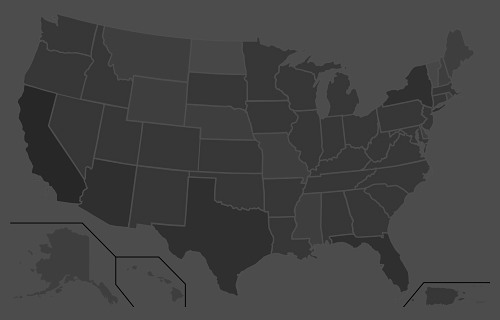“Our added winter moisture and active calling period led to a very long nesting and hatching season, starting in late April and extending into early summer, with chicks hatching as late as early July,” O’Dell said. “From a population standpoint, we are out of a deficit for the first time since 2001-2002. Quail are starting to pop up in places they haven’t been seen in a while.
“If you’ve never had the chance to experience what Arizona quail hunting built its name on, then this would be the year to get out and enjoy it.”
Meanwhile, hunters should note that the season for Mearns’ quail doesn’t begin until Dec. 4. It’s summer rainfall that plays a key role in nesting success and population numbers of this species. After a spotty and relatively weak monsoon across southern Arizona, these birds are likely to be abundant only in pockets that received sufficient precipitation this summer.
A valid Arizona hunting or combination hunt and fish license is required for all hunters 10 and older. Those hunters under 10 must either have a valid hunting or combination hunt and fish license, or be accompanied by an adult who possesses a valid hunting or combination hunt and fish license. Licenses can be purchased online or at license dealers statewide. A youth combination hunt and fish license (ages 10 to 17) is $5.
The general bag limit is 15 quail per day in the aggregate, of which no more than eight may be Mearns’ quail (when the Mearns’ season opens Dec. 4). The general possession limit is 45 quail in the aggregate after opening day, of which no more than 15 Gambel’s, scaled or California quail in the aggregate may be taken in any one day. After the opening of the Mearns’ season, the 45-quail possession limit may include 24 Mearns’ quail, of which no more than eight may be taken in any one day.
More quail-hunting information can be found on the department’s website at https://www.azgfd.com/Hunting/. Another resource for both new and experienced hunters alike is “An Introduction to Hunting Arizona’s Small Game.” Written by Randall D. Babb, the 196-page, full-color book covers where and how to hunt small game birds (like quail), squirrels, rabbits, ducks and geese. It also includes how to prepare and cook your harvest, with illustrations and recipes. The book can be ordered for $16.95 at www.azgfd.gov/publications.
Finally, hunters should check out O’Dell’s techniques for field-dressing quail at https://www.youtube.com/watch?v=3gRwZAcWzzk.
####
Publishers Notes: OUT OF STATE HUNTERS, FISHERMEN & OUTDOOR ENTHUSIASTS; Due to the Covid 19 pandemic, there could be limitations for OUT of STATE hunters, fishermen and other outdoor enthusiasts to include a 14-day quarantine requirement or negative COVID-19 testing alternative. Please check with the State's Department of Natural Resources BEFORE you travel or apply for the 2020 Fall Hunts.
Disclaimer: The views expressed on this site are that of the authors and not necessarily that of TBC Press
Michigan DNR Approves 2021 Deer Hunting Regulations
Submitted by: TBC Press
Posted on: 02/15/21
The Backcountry Press
The country's premier daily HUNTING, FISHING & OUTDOOR news in the USA and around the globe. Read whats happening in your neck of the woods & beyond.
© 2020 TBC Press - All Rights Reserved Website Design by:
News # 14218
The 2021 approved regulation changes are:
(1) Deer Management Unit-specific antlerless deer licenses have been replaced with a universal antlerless license that can be used across multiple DMUs.
- Antlerless licenses may now be purchased without an application in the Lower Peninsula and portions of the south-central Upper Peninsula that have DMUs open to antlerless deer hunting. Licenses may be used on public or private land.
- In the mid-zone Upper Peninsula DMUs that are open to antlerless deer hunting, a deer hunting access permit must accompany the universal antlerless license. The deer hunting access permit, intended to limit participation where the population can be sensitive to harsh winter weather, will be available through a drawing.
- The northernmost DMUs of the U.P. are closed to antlerless deer hunting in all seasons.
(2) Archery hunters in portions of the Upper Peninsula may pursue antlerless deer on their deer or deer combo licenses. DMUs 127, 066, 131, 042, 031, 007 and 048 will be closed to antlerless harvest during the archery seasons.
(3) The expanded urban archery season through Jan. 31 is now permanent in Wayne, Oakland and Macomb counties.
(4) Upper Peninsula supplemental and recreational deer feeding regulations have changed, including:
- A permit is no longer required for supplemental feeding in the Upper Peninsula.
- Supplemental feeding can occur Jan. 1 to May 15.
- Recreational or supplemental feeding is prohibited if a location is deemed to be a safety hazard.
- All recreational feed must be given in increments of only 2 gallons per calendar day and only 2 gallons at any one time.
The 2021 deer hunting regulations will be printed in the 2021 Hunting Digest, which is expected to be finalized in late spring and available at license agent locations and online at Michigan.gov/DNRDigests around July 1.
####
Publishers Notes: Our country is still battling COVID-19. To avoid the spread of this virus and continue to enjoy outdoor activities, ALL outdoor enthusiasts (man, woman, child) should follow the guidelines set by nps.gov. These guidelines include; social distancing, the Leave No Trace principles, including pack-in and pack-out, to keep outdoor spaces safe and healthy.
Deer hunting regulations for the 2021 season were approved recently by the Michigan Natural Resources Commission at its regular meeting, hosted virtually. The changes, aimed at further simplifying deer regulations and removing barriers to hunting participation, go into effect with the start of the 2021 deer hunting seasons in September.
The regulations will provide additional opportunity, flexibility and cost savings for hunters and – based on existing and projected data the Department of Natural Resources uses to gauge the impact of proposed regulations – are not expected to have a significant negative effect on the deer herd or the quality of deer hunting.
“Our goals with these regulations are twofold: to make hunting regulations easier to understand and follow in Michigan, and also to manage Michigan’s abundant deer herd,” said DNR deer program specialist Chad Stewart. “We feel that these changes move us in the right direction.”












